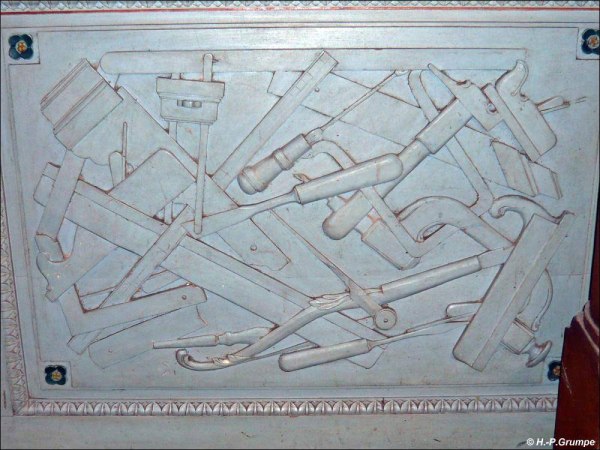One of the earliest images of a try square that I know of is a carpenter from the tomb of Rekhmire in Egypt, a New Kingdom official from the 18th dynasty (1543-1292 BC). The image shows a carpenter in a traditional (plaid flannel) loincloth using a straightedge on a piece of work. On the floor is a miter square, a form that remained unchanged until the 18th century.
And on the wall is a try square that looks darn modern. It looks nothing like a Melencolia I square.
Many of the hand tools we use today are descended in some way from Egyptian tools that later made their way to Asia and Europe – via Greece and Italy. But as far as I can tell, the Melencolia square emerged sometime after the Egyptians and then disappeared. We woodworkers reverted back to the Egyptian-style try square for some reason.
After making at least a dozen of these Melencolia-style squares, I can assure you that I’ll be keeping the form alive – at least in Kentucky. They are simple, compact and easy to use.
Today I made a pair of squares that are the last in this series. I must get on with building furniture that puts food on the table. These last two squares are the improved “Romanian” form of the Melencolia I square. The improvement is that the blade is a bit wider than the stock, making them easier to true up.
Both of the squares I made today were slightly out of true, and it was indeed much easier to bring them into line because the blade was wider. If you make one of these squares, I recommend this modification.
As a final note, thanks to Jeff Burks for his research and for pointing out these squares to me in the first place. Without his keen eye, I’d have never noticed them.
— Christopher Schwarz













